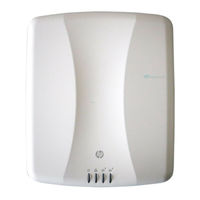HP E-MSM410 Manuals
Manuals and User Guides for HP E-MSM410. We have 1 HP E-MSM410 manual available for free PDF download: Management And Configuration Manual
HP E-MSM410 Management And Configuration Manual (210 pages)
MSM3 Series/MSM4 Series
Brand: HP
|
Category: Wireless Access Point
|
Size: 2.76 MB
Table of Contents
Advertisement
Advertisement
